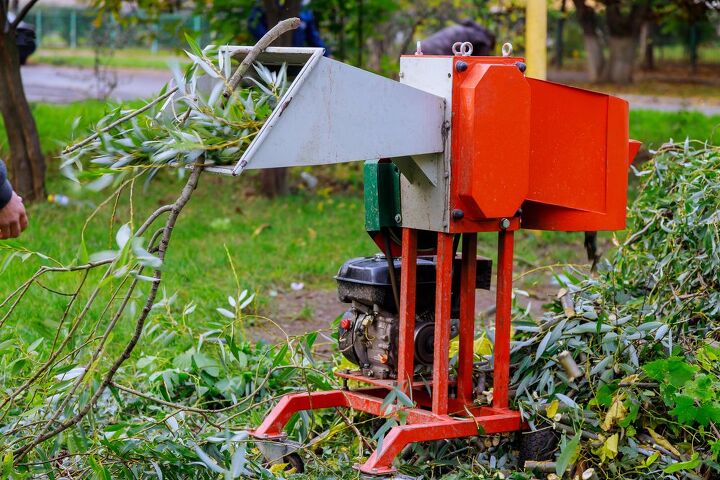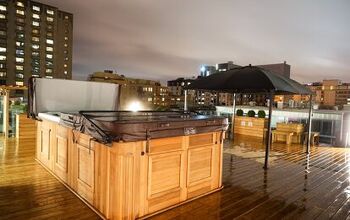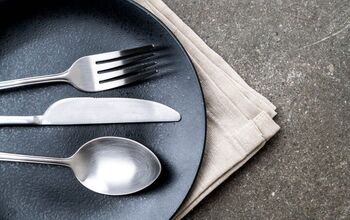Can You Put A 2×4 In A Woodchipper? (Find Out Now!)

Woodchippers have been a vital part of the yard cleanup arsenal for years, and these powerful machines make easy work of small branches, yard clippings, tree limbs, and brush. Some woodchippers even have a shredding feature, and these woodchippers can shred leaves.
Sure, it’s common to see brush and fallen tree limbs going through a woodchipper, but what about planks? For example, can a 2×4 be put through a woodchipper? Such is the question this article answers.
No, you shouldn’t put 2x4s in a woodchipper, as doing so can damage the machine and also void its warranty. Woodchippers are not equipped to handle lumber, especially if it’s pressure-treated. If you need to get rid of 2x4s, consider repurposing these or selling them at a discount. There are always markets for new and repurposed wood.
How Does a Woodchipper Work?
Woodchippers may look like complicated machines on the outside, and this assumed complexity is also a result of these machines being powerful, loud, and equipped with sharp components. In reality, a woodchipper is comprised of only a few simple mechanisms. And when all these mechanisms work in conjunction, the result is a machine that makes removing yard waste simple.
Woodchipping: From Start to Finish
The woodchipper’s crankshaft is powered by the engine. The crankshaft is attached to the clutch, and this latter component can either move the drive belt or ensure the system stays still. When the engine generates 1,600 rpm or more, the clutch will engage the drive belt and cause it to turn.
Attached to the drive belt is the impeller, and this is equipped with a chipper knife. When yard waste is loaded into the woodchipper, it first makes contact with the impeller and the chipper knife. These components break down the waste. There are also fins on the back of the impeller, and these fins—in conjunction with airflow from the machine’s vents—push the broken-down yard waste out of the discharge chute.
Residential vs. Commercial Woodchipper
While most woodchippers still run on gas, there are some electric models out there. Woodchippers that are intended for residential use usually have low double-digit horsepower, whereas commercial woodchippers often have 200 horsepower or more.
There’s really no need for a homeowner to ever own such a powerful machine. Many small-time farmers and owners of acres of land swear by residential woodchippers.
Can You Put a 2×4 in a Woodchipper?
While one can put a 2×4 in a woodchipper, doing so is far from common practice. A lot of 2x4s are made out of pressure-treated lumber, and this kind a lumber should definitely stay out of the wood chipper. Pressure-treated lumber contains chromated copper arsenate (CCA), and inhaling the dust that’d be generated by chipping this wood can be harmful.
Also, commercial lumber is generally hard to cut through, so putting this through your woodchipper may damage the machine and void the warranty you have on it. There are easier ways to dispose of 2x4s. There’s always a market for wood, whether it’s brand new or repurposed.
Just because you want to get rid of a 2×4 doesn’t mean you should put your woodchipper in harm’s way. Therefore, when you want to dispose of 2x4s, pursue less costly options.
What Can Go In a Woodchipper?
Listed below are several things that can be put through a woodchipper without issue. Keep in mind, however, that you should consult your manual before putting anything in the woodchipper.
The manual will specify what can go in the woodchipper and what can’t. If something listed below is classified as woodchipper-safe—but your manual says to avoid putting this in the woodchipper—air on the side of caution and trust the manual recommendation.
Wet Wood
Here, I am referring to wet limbs, branches, and brush. I’m not referring to wet lumber, as putting this in the woodchipper would yield a disastrous result.
Generally speaking, cutting wet wood is more of a challenge for a woodchipper, especially if the woodchipper is powered by electricity. Therefore, if you’re woodchipping fresh wood—which is often wet—you should trim the wood down, as doing so will ensure the machine can handle all that’s being put through it.
Sometimes, putting wet wood through the woodchipper is unavoidable. That being said, putting wet wood through the woodchipper should not be considered common practice. Wait for the wood to dry out, at least a little, before you put it through the woodchipper.
Acorns
A lot of homeowners break their woodchippers out in the fall, as this is peak yard waste season. No fall landscape is complete without acorns strewn everywhere, but often homeowners want to get rid of these pesky nuts just like they get rid of other yard waste.
Yes, acorns can go in the woodchipper, but one must be cautious before doing this. Acorns don’t always break down easily, and sometimes the heavy blades of the woodchipper can turn an acorn into a projectile. The machine may deflect the acorn when it enters the hopper, and if you’re not paying attention you might get hit in the head or body by the kicked-back acorn.
Instead of putting acorns in a woodchipper, put them in a shredder. As was mentioned earlier, some woodchippers are equipped with a special shredder.
Pine Cones
You can put pine cones through the woodchipper and there won’t be any problems. In fact, crushed pine cones make good compost.
Just make sure you wear a dust mask when you put pine cones through the woodchipper, as a fine pine dust is created when the pine cones go through the machine. Lastly, make sure you clean the blades afterward to remove any leftover pine sap.
Pine Limbs
Just like pine cones, pine limbs can also be put through a woodchipper or shredder. Just make sure you clean the woodchipper after putting pine limbs through it, as these contain much more sap than pine cones. Pine sap, if it’s allowed to accumulate, can slow down the blades and dull them over time.

Matt loves everything DIY. He has been learning and practicing different trades since he was a kid, and he's often the first one called when a friend or family member needs a helping hand at home. Matt loves to work with wood and stone, and landscaping is by far his most favorite pastime.
More by Matthew Mountain
























![Cost To Drill A Well [Pricing Per Foot & Cost By State]](https://cdn-fastly.upgradedhome.com/media/2023/07/31/9074980/cost-to-drill-a-well-pricing-per-foot-cost-by-state.jpg?size=350x220)


